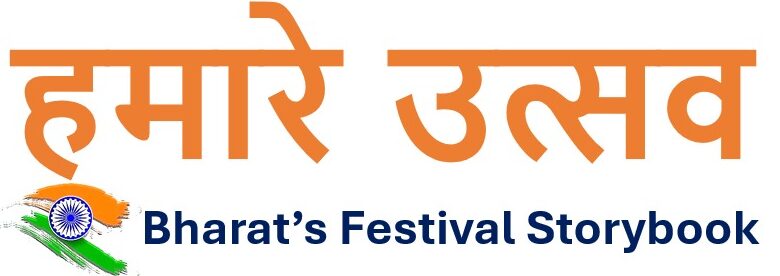In a world racing ahead with algorithms and answers, Guru Purnima pulls us back to the essence — the one who taught us how to ask the right questions.
Celebrated across India and many parts of Asia, Guru Purnima is not just a day marked by rituals. It is a celebration of the transformative power of knowledge, the purity of guidance, and the humility of learning.
In this blog, we explore:
- What Guru Purnima is and why it’s celebrated
- The spiritual relevance in Hinduism, Buddhism & Jainism
- The story of Sage Ved Vyasa and his timeless contribution
- The deeper meaning of “Guru Brahma, Guru Vishnu…”
- How the idea of Guru Dakshina has evolved in modern times
🌕 What Is Guru Purnima & Why Is It Celebrated?
Guru Purnima falls on the full moon day (Purnima) in the Hindu month of Ashadha (June–July). It is a day dedicated to honouring the guru — the one who removes darkness (gu) and brings light (ru) into our lives.
While it is rooted in Vedic tradition, it has grown into a multi-faith, multi-layered observance that celebrates:
- Spiritual gurus who awaken consciousness
- Academic teachers who shaped careers
- Life mentors who guided through challenges
🙏 Why is this day so special?
Because while birthdays honour our body, Guru Purnima honours the awakening of our inner self — something no textbook or technology can replace.
🛕 The Spiritual Significance in Hinduism, Buddhism & Jainism
🕉️ In Hinduism:
Guru Purnima is a deeply spiritual day marking Sage Ved Vyasa’s birth, who is considered the Adi Guru (first teacher). It is also seen as a time to begin spiritual study (svadhyaya), seek blessings, and recommit to learning.
Many spiritual seekers:
- Meditate or fast
- Offer flowers and dakshina to their living guru
- Recite sacred texts or the Guru Stotram
☸️ In Buddhism:
Guru Purnima is significant as it marks the day Gautama Buddha gave his first sermon at Sarnath after attaining enlightenment. It was on this day that the Sangha (community of monks) was born — a foundational moment in Buddhist history.
Thus, Guru Purnima is not just Hindu — it’s a day that celebrates teaching, transmission, and awakening in the truest sense.
🕎 In Jainism:
For Jains, this day marks the chaturmas (four-month spiritual retreat) when monks and spiritual teachers settle in one place and provide teachings to the lay community. It is also the day when Lord Mahavira chose Indrabhuti Gautam as his first disciple — a powerful Guru–Shishya moment.
📜 Why We Celebrate Sage Ved Vyasa on This Day
Sage Ved Vyasa is one of the greatest intellectual forces in Indian history. His contributions include:
- Compiling the four Vedas
- Writing the Mahabharata, the longest epic in world literature
- Authoring the 18 Puranas, the Brahma Sutras, and the Bhagavata Purana
He not only organized vast oral knowledge into systematic texts but also ensured their transmission across generations.
Thus, Guru Purnima is his birthday — not in a personal sense, but in an eternal intellectual and spiritual legacy.
🕉️ “Guru Brahma, Guru Vishnu…” — A Deep Dive into the Guru Stotram
One of the most recited Sanskrit verses during Guru Purnima is:
Guru Brahma, Guru Vishnu, Guru Devo Maheshwara
Guru Saakshat ParaBrahma, Tasmai Shri Gurave Namah
🌟 Meaning:
- Guru is Brahma: the creator of knowledge
- Guru is Vishnu: the sustainer who helps us apply that knowledge
- Guru is Maheshwara (Shiva): the transformer who destroys ignorance
- Guru is the absolute (Parabrahma) — truth in human form
This verse reminds us that a true guru embodies the entire universe of transformation — they build, protect, and elevate the seeker.
🪔 It’s not about idolizing a person. It’s about revering the principle of higher consciousness that flows through the guru.
🎁 Guru Dakshina — Then vs Now
🔱 In Ancient Times:
Guru Dakshina was the offering a student made to their guru — not as payment, but as gratitude. It wasn’t always monetary. Sometimes, it was a life task.
The Mahabharata’s Ekalavya offered his thumb as Guru Dakshina to Dronacharya — a symbolic and controversial act of obedience.
🕰️ Today’s Form of Guru Dakshina:
- Practicing what you were taught
- Living with integrity
- Serving others using the knowledge you gained
- Supporting your mentor’s vision in any way possible
🧡 Modern Guru Dakshina is about application.
It’s not about giving — it’s about growing and passing it forward.
🧘 Final Thoughts: Why This Day Still Matters
In a time of reels, chatbots, and instant advice, the idea of a guru may seem outdated. But the need for wisdom, for direction, and for deeper understanding is stronger than ever.
Guru Purnima is not about rituals. It’s about relationships.
With those who lit your path, believed in you, or taught you to believe in yourself.
So this Guru Purnima, don’t just offer flowers.
Offer your attention. Your gratitude. Your growth.
🛕 Coming Soon on HumareUtsav.in:
- 💌 “A Thank You Letter to My Guru” – Blog Format + Template
- 📸 Instagram Captions for Guru Purnima (Emotional + Trending)
- 🧵 DIY Guru Purnima Decor Ideas (Easy + Eco-friendly)
- 🧘 How to Observe Guru Purnima with Intention (Not Just Tradition)
